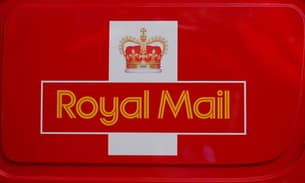
Unmasked: The city institutions given privileged status in the controversial Royal Mail flotation
The Bureau reveals the shareholders given priority status in the controversial Royal Mail flotation. (Image: Royal Mail via shutterstock.com)
Hundreds of City institutions registered interest in Royal Mail shares in the run up to one of the most controversial privatisations this century.
They were joined by hundreds of thousands of ordinary members of the public.
But most investors, whether big or small, went away empty-handed because the float was oversubscribed 23 times.
Some 17 institutions were given “priority investor status” by Goldman Sachs and UBS the Royal Mail’s global co-ordinators (GloCos). These 17 institutions, in Vince Cable’s words were “the high quality institutions of the type that would form the core of a long-term supportive investor base.”
Of the 17 priority investors, 16 were actually allocated 22% of Royal Mail.
Priority investors committed to buying Royal Mail at 250p – 80p below the offer price, even in the event of threatened industrial action by postal workers and a possible US government debt default.
Unmasked
So who were the privileged 16 – the priority investors that were given the most shares in Royal Mail and who were expected by the government to act as stable, long-term investors?
Until now, the identity of the priority investors was one of the City’s most closely guarded secrets. The government, in fact, blocked freedom of interest requests on the grounds that disclosing who they are would breach commercial confidentiality even though it is clear the majority of these firms have profited handsomely from a public asset.
The Bureau accessed Royal Mail’s register of beneficial interests to examine who owned the biggest slices of the postal operator after it was sold.
By comparing this information to a graphic contained in the National Audit Office report showing changes of shareholdings in the Royal Mail’s 21 largest investors, a picture of the priority investors emerges.
Four of the largest ‘priority investors’ appear to be sovereign wealth funds belonging to Singapore and Kuwait together with US based Capital Group and Lansdowne, a UK hedge fund.
Lansdowne is known for its close links to the Conservative Party. Its co-founder, Sir Paul Ruddock, retired from the firm but still a substantial beneficiary, has donated over £700,000 to the Conservatives according to Electoral Commission data. Peter Davies, co-head of development strategy at Lansdowne was best man at George Osborne’s wedding. Lansdowne was a short seller of Northern Rock prior to its collapse.
Capital Group, based in California and one of the world’s largest investment managers, had a holding of 20,244,100 shares at the close of trading on October 15. Just one week later it had only 3,060,000 which would have yielded a potential profit of tens of millions in the space of seven days.
A likely priority investor is Gazelle with an allocation of 16m shares initially worth £52.8. Gazelle has no identifying information on Royal Mail’s shareholder register – not even a postal address. The Bureau approached an investment adviser with links to a hedge fund called Gazelle but he denied owning shares in Royal Mail.
Two other apparent priority investors that sold a tranche of their holdings at a swift profit appear to include Och-Ziff,the US alternative asset manager who declined to comment, and UK pension firm, Standard Life.
Documents passed to the Bureau show that Standard Life made a £25.8m profit on its allocation of Royal Mail shares.
Of the 16 priority investors, 12, perfectly lawfully, sold some or all of their holdings within a few weeks of the float.
Of those, six priority investors sold out completely so scooping profits running into tens of millions of pounds.
Mystery surrounds the identity of seven priority investors. These investors sold out completely within a few weeks of the float and some may have sold out on the first day of dealings. The Children’s Investment Fund is the Royal Mail’s biggest shareholder with over 4%. It was not a priority investor.
Implications
So were those institutions lucky enough to get hold of Royal Mail favoured clients of the banks organising the sale?
Was it a case of the Square Mile looking after its own?
The suspicion won’t go away that City financiers advised politicians and government officials to the detriment of the taxpayer.
Vince Cable publicly expressed his intention that the Royal Mail shareholder base should be filled with long-term, stable investors. Today, the Royal Mail shareholders are dominated by hedge funds.
Lazard’s and Goldman Sachs declined to comment on issues raised by the Royal Mail float. UBS failed to respond.
The government rejects any suggestion that value for the taxpayer was not sufficiently prioritised and that it allowed the Royal Mail to be sold on the cheap.
“Our primary objective was to secure the future of the universal postal service by completing a sale of a majority stake in Royal Mail in order for the company to be able to access capital markets,” a spokesman said.
“A failed sale would have been a very poor outcome for the taxpayer and it would have been wrong to take excessive risks with a company that provides a vital public service across the whole of the UK and employs 150,000 people. We secured a sale at the highest price that we had evidence to support, based on assessments of the company’s value and market conditions at the time of the sale.”
The government is said to be about to announce more privatisations. Among those said to be sold off soon include Eurostar and Urenco, the uranium enrichment company partially owned by the British and Dutch governments. A further sale of Royal Mail shares is also on the cards.
The Bureau has compared data from Royal Mail’s register of beneficial interests, which shows the owners of the firm’s shares, with information in the recent NAO report, where the Priority Investors are only identified by letters of the alphabet. This analysis has given us a new insight into who some of the ‘favoured few’ to profit from the sale were – and how big a slice they got of the UK’s 500-year-old postal provider.
Likely Priority Investors
- Government Investment Company of Singapore – the sovereign wealth fund was the second largest shareholder in the weeks after IPO, owning around 4% of the firm. It received an allocation of around 18m shares, bought at 330p from the government. This allocation, which would have cost just under £60m, would have been worth over £88m after the first day’s trading on the October 15.
- Lansdowne – According to the NAO report, hedge fund Lansdowne received an allocation of around 18m shares, at a cost of just under £60m. The most recent Royal Mail register the Bureau has seen shows that on the February 17 Lansdowne had 17.8m shares, which would have been worth over £106m at the close of trading on that day.
- Kuwait Investment Authority – The Kuwaiti government wealth fund appears to have had an allocation of 16m shares worth just under £53m. Another Kuwaiti government fund then bought around 300,000 shares on the open market. The register from February this year shows that it has retained its holding.
- The Capital Group – The US based investment funds is likely to be one of the investors that cashed out in the weeks following the IPO. After receiving an initial allocation of just under 20m shares, it reduced its holding to just over 3m shares by mid-November 2013.
- Och-Ziff – The US based hedge fund had a holding of 10m shares on the October 15. A week later it had reduced its holding to 3.5m shares. No Och-Ziff holdings appear on filings from the November 13, leading suggesting it had disposed of its remaining shares.
- Standard Life – Standard Life is one of the companies that was involved in conditional trading – when select institutional investors were allowed to trade Royal Mail shares in a ‘grey market’ from the October 11 to set a market price for the shares when full trading opened on the October 15.
- Gazelle – The register shows that an organisation named ‘Gazelle’ had 16m of shares on the October 15 and retained this holding in the weeks after trading. This appears to match a holding referenced in the NAO report. However, as no identifying information on the company is included on the register, the Bureau has been unable to identify Gazelle.
- ING and Nordea – Two holdings that are in the name of Nordea, the Scandinavian financial services firm, and ING, the Dutch financial conglomerate, match the amounts held by priority investors in the NAO reports. However both banks have informed us that they are not the ultimate owners of these shares.
- Seven other priority investors appear in the NAO report – and sold either all or the majority of their holdings in the first few weeks of trading. The Bureau believes that in the case of some of the larger accounts these organisations most likely sold on the first day of trading – otherwise their holdings should have been identifiable via Royal Mail’s register of beneficial ownership. One of these companies received an allocation of almost 20m shares and is recorded as having sold 97% of its holding.
- Fidelity, Threadneedle and Blackrock have been reported as priority investors. Blackrock issued a “no comment” while Fidelity and Threadneedle have not responded yet.




